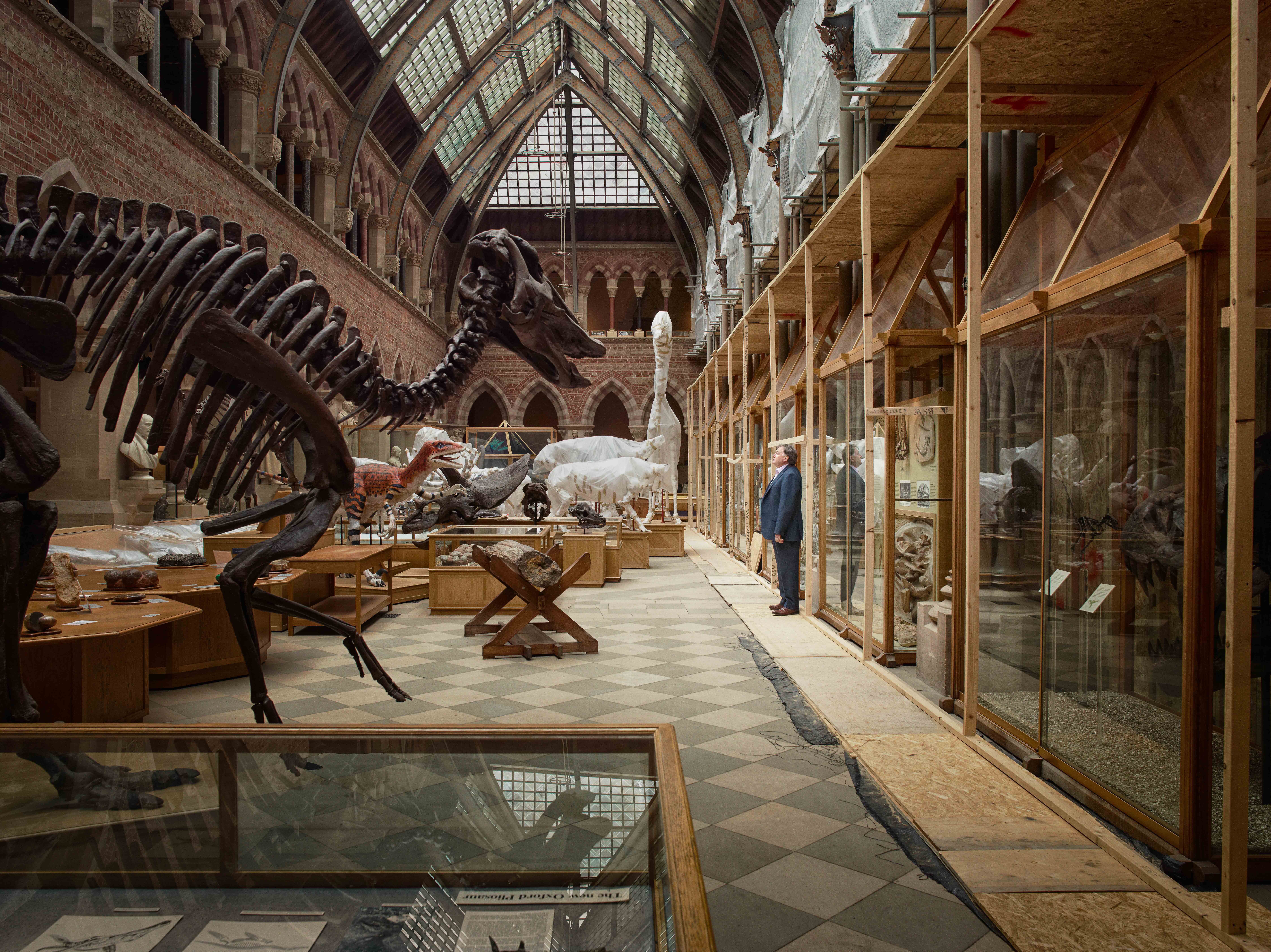Writing about Oxford, the travel writer Jan Morris observed, “it forms a national paradigm — in whose structure sometimes shadowy, sometimes splendidly sunlit, we may explore the history, the character and the condition of the English”. When Joanna Vestey moved to the city, she was intrigued by the way its inhabitants interact with its history, and she’s explored this nexus in her upcoming book Custodians.
Lush, wide-angle shots frame the interior of locations such as The Radcliffe Observatory, The Codrington Library and the Trinity College Dining Hall, inhabited by a solitary figure somehow connected to the building. Vestey was interested in “how institutions shape us, and we them”, she writes in the afterword. She explains to me that she “wanted to find a middle ground that preferenced the space and the individual equally and leant towards something more painterly than photographic”.
Russell Roberts describes Custodians as “a journey through the tourist imagination of Englishness” in his essay for the book, but Vestey says that she doesn’t intend this to be deferential. “[Roberts] also includes [an excerpt] by Allan Bennett from The History Boys — it’s a brilliant quote that sets the work in a different direction, because what I didn’t want it to be was a sort of homage to Englishness and create a reverence about the spaces and the people. I think Oxford is very much split into ‘town-and-gown’ as it is, so putting some of the more contemporary spaces in hopefully shook that up a bit.
“I think I’m really interested in the patina of time, how you can kind of peel stuff away like an archeologist,” she adds. “Oxford is so kept in aspic…the buildings ended up being a metaphor for something quite permanent. It framed the human fragility, and the idea that we pass through and the clues that we leave as to our time,” Vestey says.
This fascination with the human aspect of architecture is a recurring theme in Vestey’s work, echoing a previous series on abandoned buildings in Havana. She places great stock in the metaphysical aspect of buildings, with idea that you are dancing with ghosts. “I’m really interested in that, Candida Höfer did a series about it [Architecture of Absence] — even though no one’s in a space there’s still that kind of tension. You don’t need someone to be in a space to know what it’s used for; it doesn’t really matter if its the inside of a gym or a town hall, even if you took out all the furniture, there’s still something about the atmosphere that still holds that story.”
Vestey’s former life as a photojournalist has helped her appreciate and refine her own slower, more considered style – her work is a meditation on time and its effects and this is reflected in her choice of equipment, shooting on an old Hasselblad with a digital back. Her distinctive way of working isn’t for everyone, but she says that’s maybe the point.
“It’s really hard today for contemporary photographers to define their work in some way, all the kits the same and with the sheer amount of images around daily,” she says, advising that instead of looking at where everyone else is shooting, “sometimes it’s just on your own doorstep within your own environment. I love really working something, picking an idea and revisiting it and revisiting it, seeing where it takes you.”
Find more of Joanna’s work here.
Enter the BJP International Photography Awards 2016 for the chance to have your work shown at TJ Boulting, one of London’s most innovative galleries. For more details and to enter, visit www.bjpipa.com

